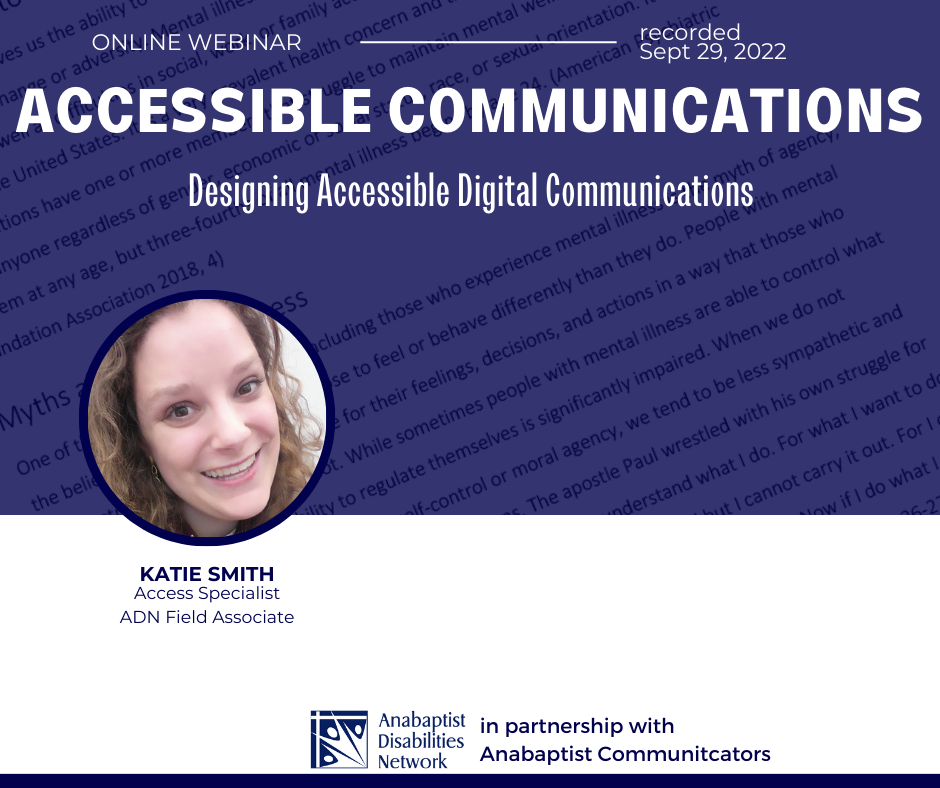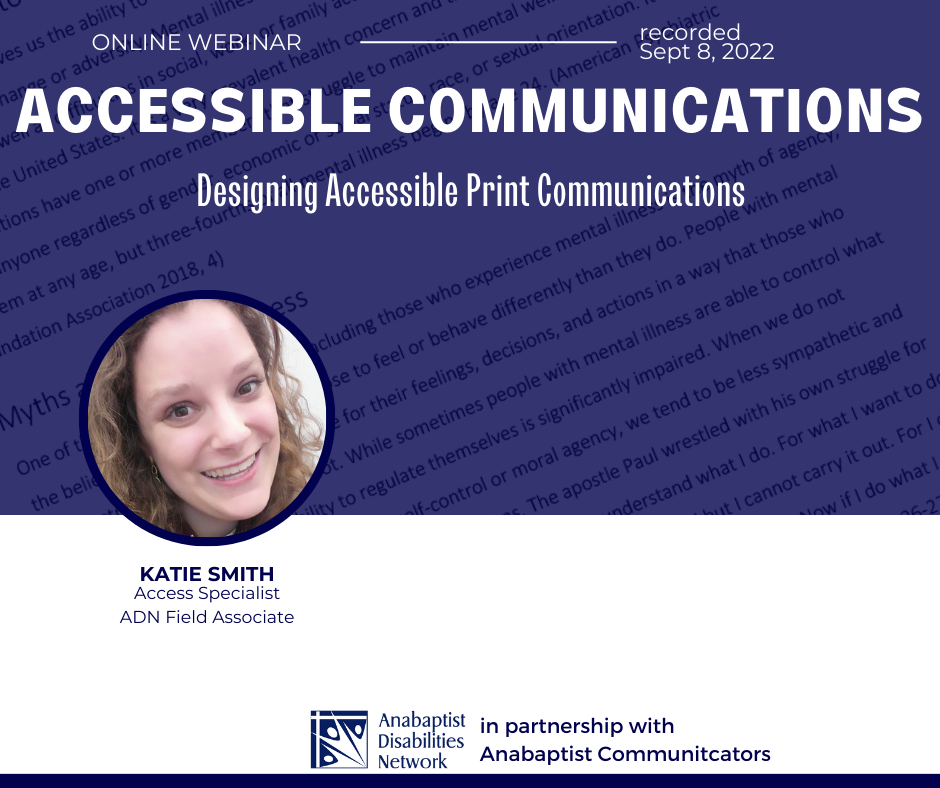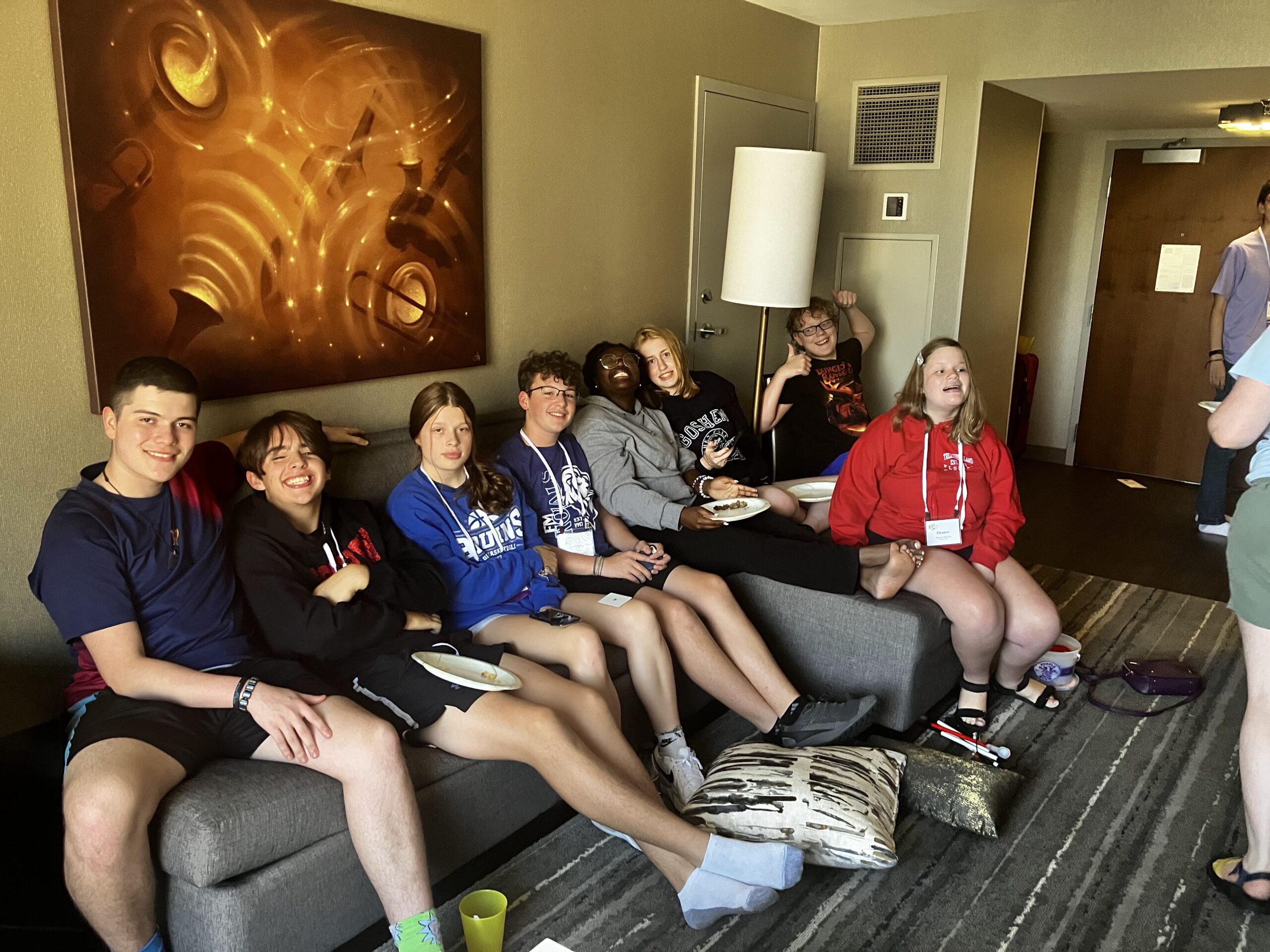Low Vision and Blindness
Each person who has low vision or who is blind experiences their disability uniquely. Some people were born blind and some have had their eyesight diminish over the course of their life. Blindness can be either total or partial. People with partial blindness have the ability to see light, shadows, and shapes.
Congregations who wish to be a barrier-free place for people with low vision or blindness can begin by addressing a person’s access to information: ensuring that large-print, braille, or audio materials are available. Additionally, individuals can verbally describe visual details and images that are relevant to sermons, presentations, discussions, or conversations.
Accessibility for People with Low Vision or Blindness
For Congregations
- Provide printed materials, including worship bulletins, in multiple formats: large print, Braille, and/or digital copies for use on tablets or screen readers. Add a notice in all printed materials stating the alternate formats that are available. Send worship and meeting materials ahead of time, so that people are prepared.
- Note: if your congregation is aware of someone who is blind or has low vision, prioritize providing materials in their preferred format.
- Use simple backgrounds and high contrast on print materials, church website, and visuals that are projected on a screen.
- Provide alt text or image descriptions on photos and images in print and online communications.
- Provide adequate lighting in the worship and gathering areas; reduce glare from windows and avoid back-lighting presenters.
- Have signs posted in Braille, especially for restrooms.
For Individuals
- Identify yourself by name when you approach a person who is blind or has low vision. State when you are leaving the conversation or area.
- Do not touch them without their initiation or permission.
- Ask before helping. Your assistance may not be needed.
- Offer a choice for guiding. “Would you like to hold my arm or to follow my voice?” If your assistance is accepted, the best practice is to offer your elbow and allow the person to direct you, or walk alongside them and direct using lefts & rights.
- Use descriptive phrases that relate to sound, smell, and distance when guiding a blind person.
- Guide dogs are working animals and should not be treated as pets. Do not touch them.
- Speak directly to the person who is blind or has low vision, not to their companion.
- Use a normal tone of voice. Curiously, people who have low vision or are blind often have people shout at them.
Resources
-

Accessible Digital Communications
ADN field associate Katie Smith leads this workshop on creating print documents that everyone can read and access.
-

Accessible Print Communications
ADN field associate Katie Smith leads this workshop on creating print documents that everyone can read and access.
Resources from Others
- Blindness and Low Vision | American Foundation for the Blind (afb.org)
- RoboBraille is an e-mail service that converts digital text documents into audio or Braille files.
Your Stories
-

Choosing Life
Verne Sanford relies on his faith and support from his community while he lives and leads as a person with low vision.




